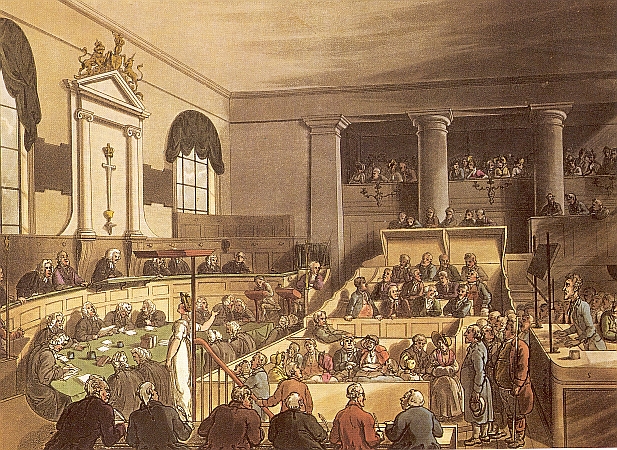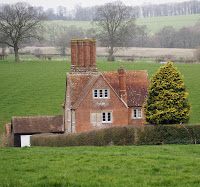Immediately
surrounding Mrs Musgrove were the little Harvilles, whom
she
was sedulously guarding from the tyranny of the two children from
the
Cottage, expressly arrived to amuse them.
On one side was a table
occupied
by some chattering girls, cutting up silk and gold paper; and
on
the other were tressels and trays, bending under the weight of brawn
and
cold pies, where riotous boys were holding high revel; the whole
completed
by a roaring Christmas fire, which seemed determined to be
heard,
in spite of all the noise of the others.
Charles and Mary also
came
in, of course, during their visit, and Mr Musgrove made a point of
paying
his respects to Lady Russell, and sat down close to her for ten
minutes,
talking with a very raised voice, but from the clamour of the
children
on his knees, generally in vain. It was
a fine family-piece.
Anne,
judging from her own temperament, would have deemed such a
domestic
hurricane a bad restorative of the nerves, which Louisa's
illness
must have so greatly shaken. But Mrs
Musgrove, who got Anne
near
her on purpose to thank her most cordially, again and again, for
all
her attentions to them, concluded a short recapitulation of what
she
had suffered herself by observing, with a happy glance round the
room,
that after all she had gone through, nothing was so likely to do
her
good as a little quiet cheerfulness at home.
Louisa
was now recovering apace. Her mother
could even think of her
being
able to join their party at home, before her brothers and sisters
went
to school again. The Harvilles had
promised to come with her and
stay
at Uppercross, whenever she returned.
Captain Wentworth was gone,
for
the present, to see his brother in Shropshire.
"I
hope I shall remember, in future," said Lady Russell, as soon as
they
were reseated in the carriage, "not to call at Uppercross in the
Christmas
holidays."
Whatever your own idea of a perfect Christmas, whether it's a noisy family gathering or something more sedate, everyone here at Historical Romance UK hopes it will bring you whatever you wish for.
A Merry Christmas and a Happy New Year from all of us at Historical Romance UK

















